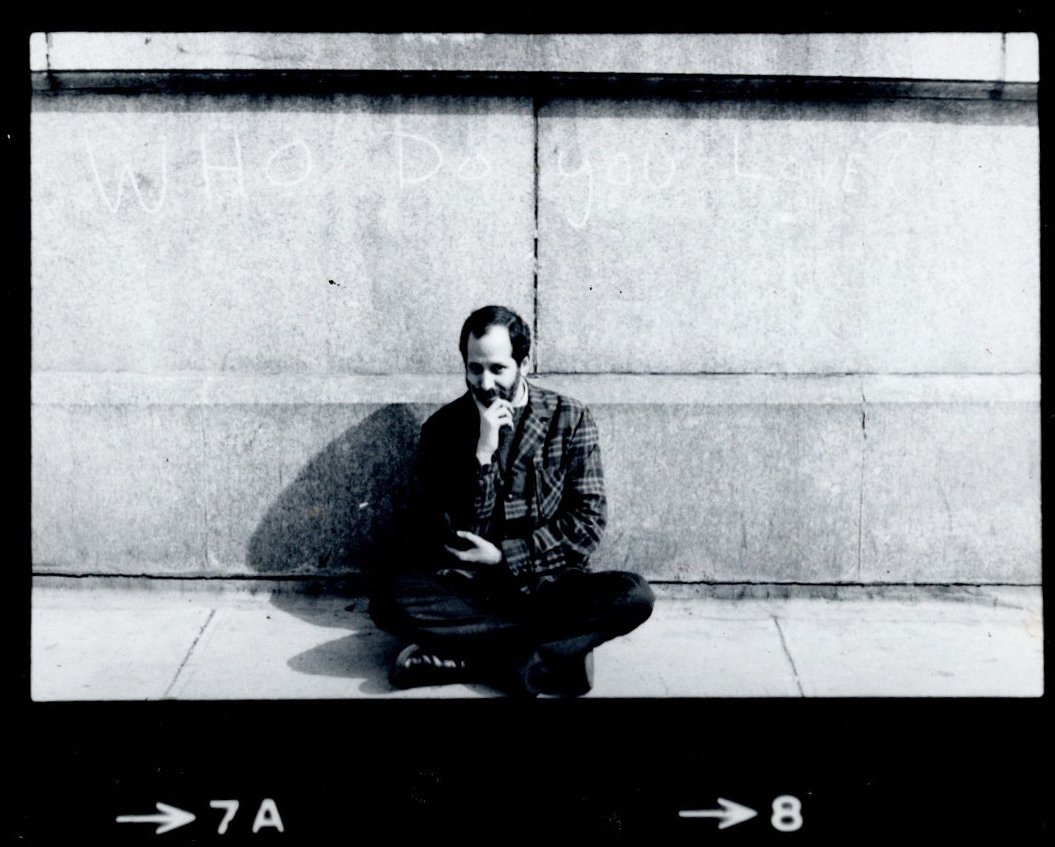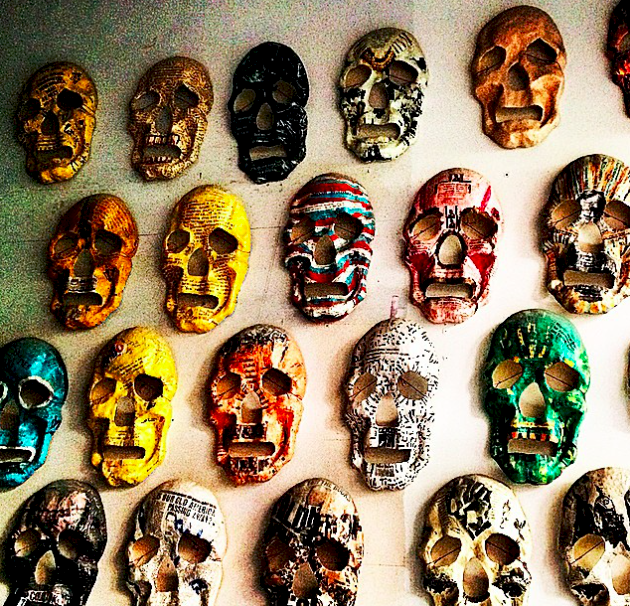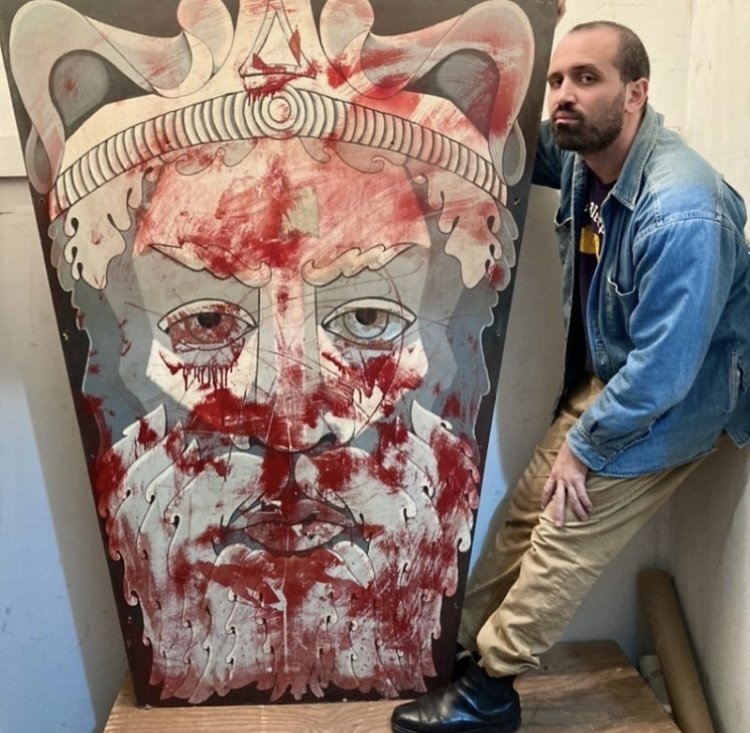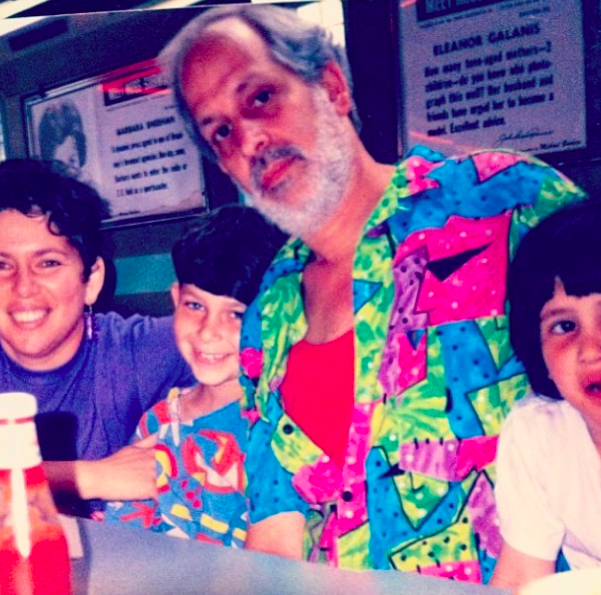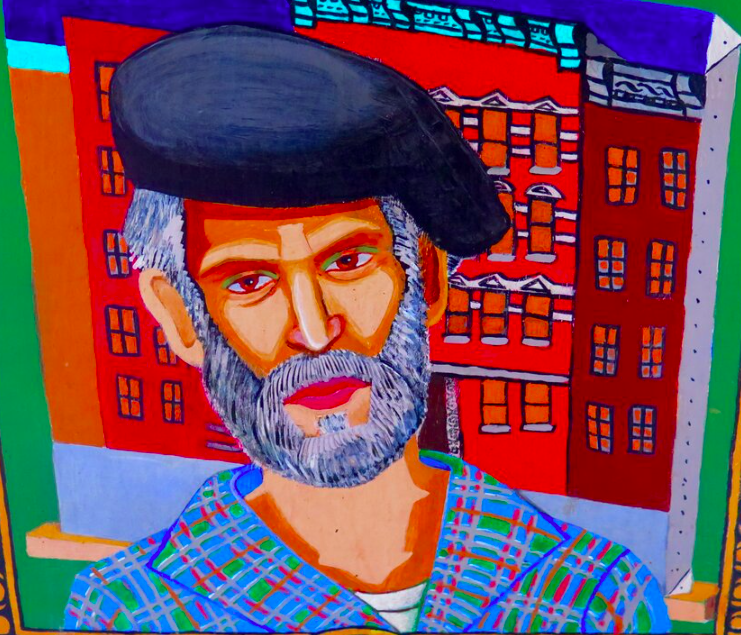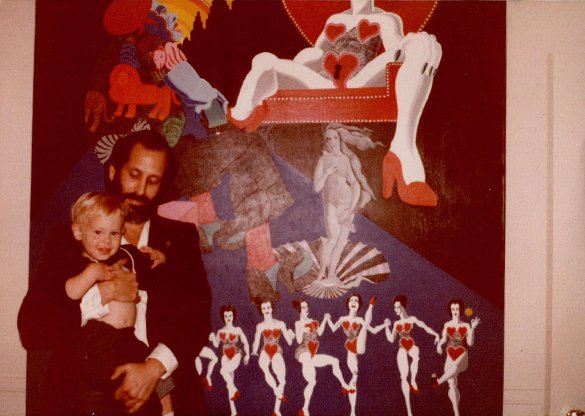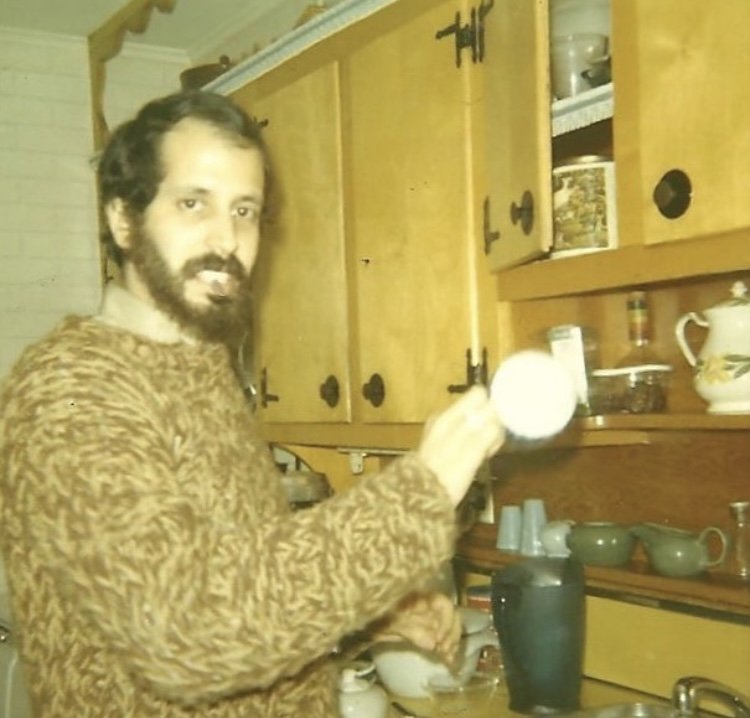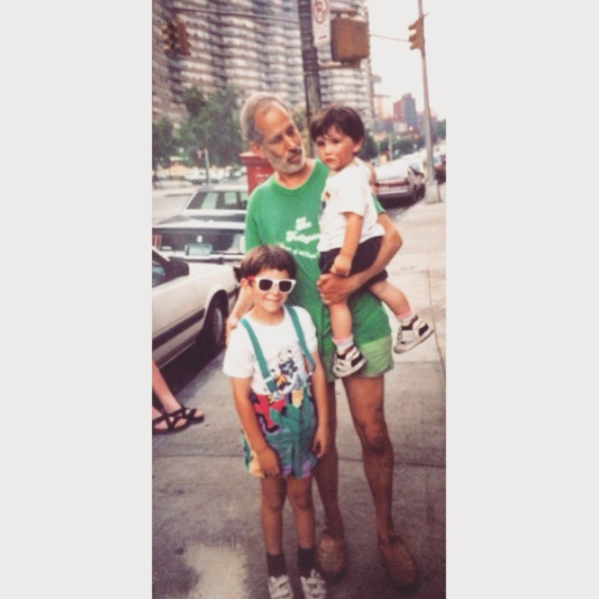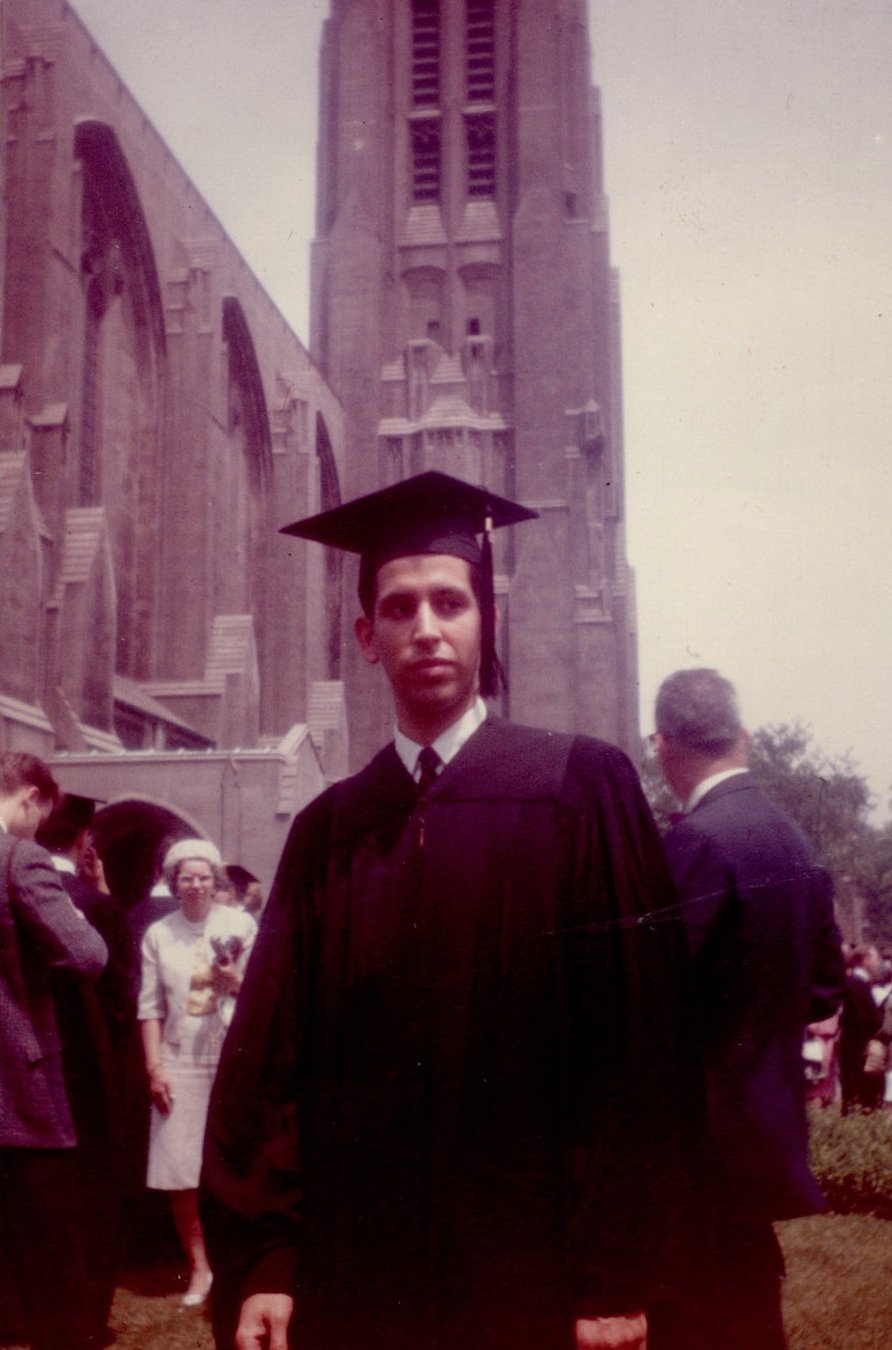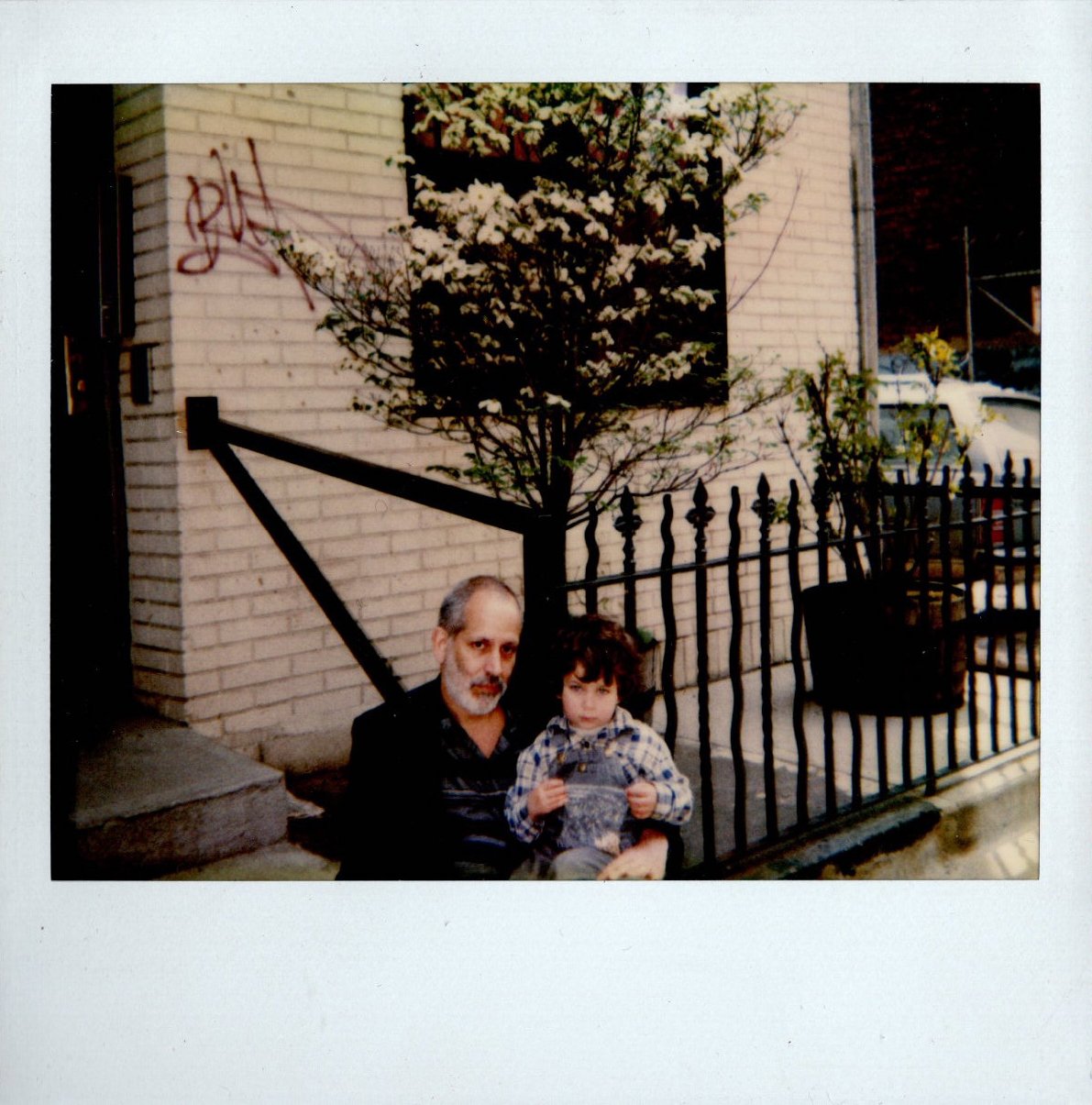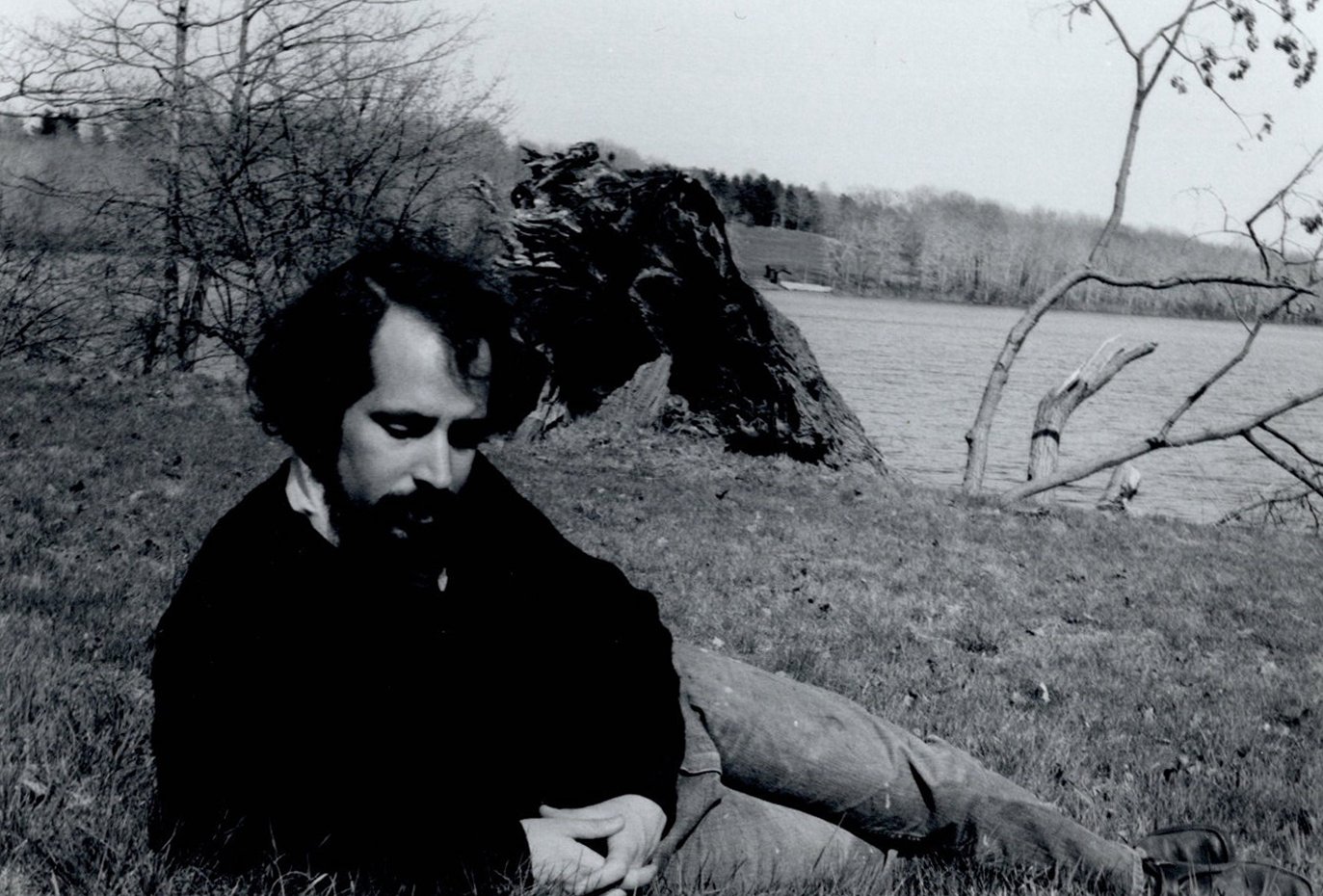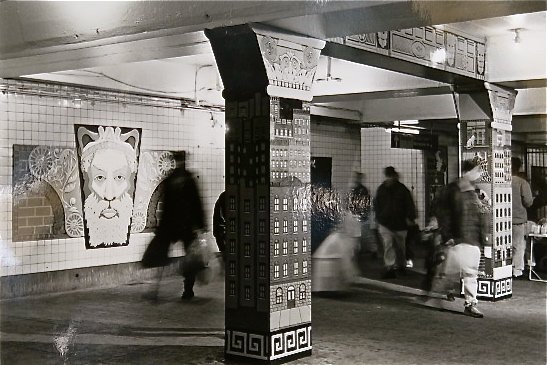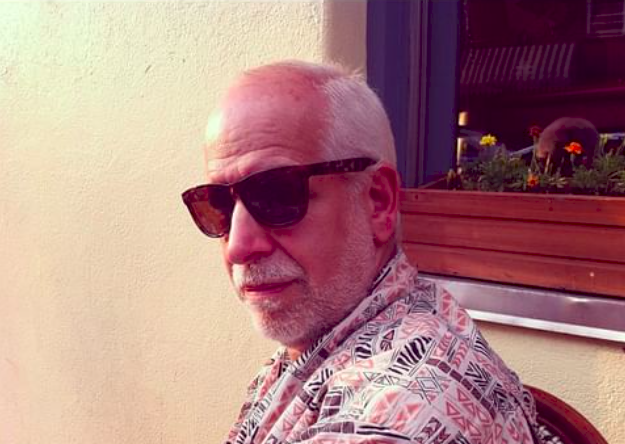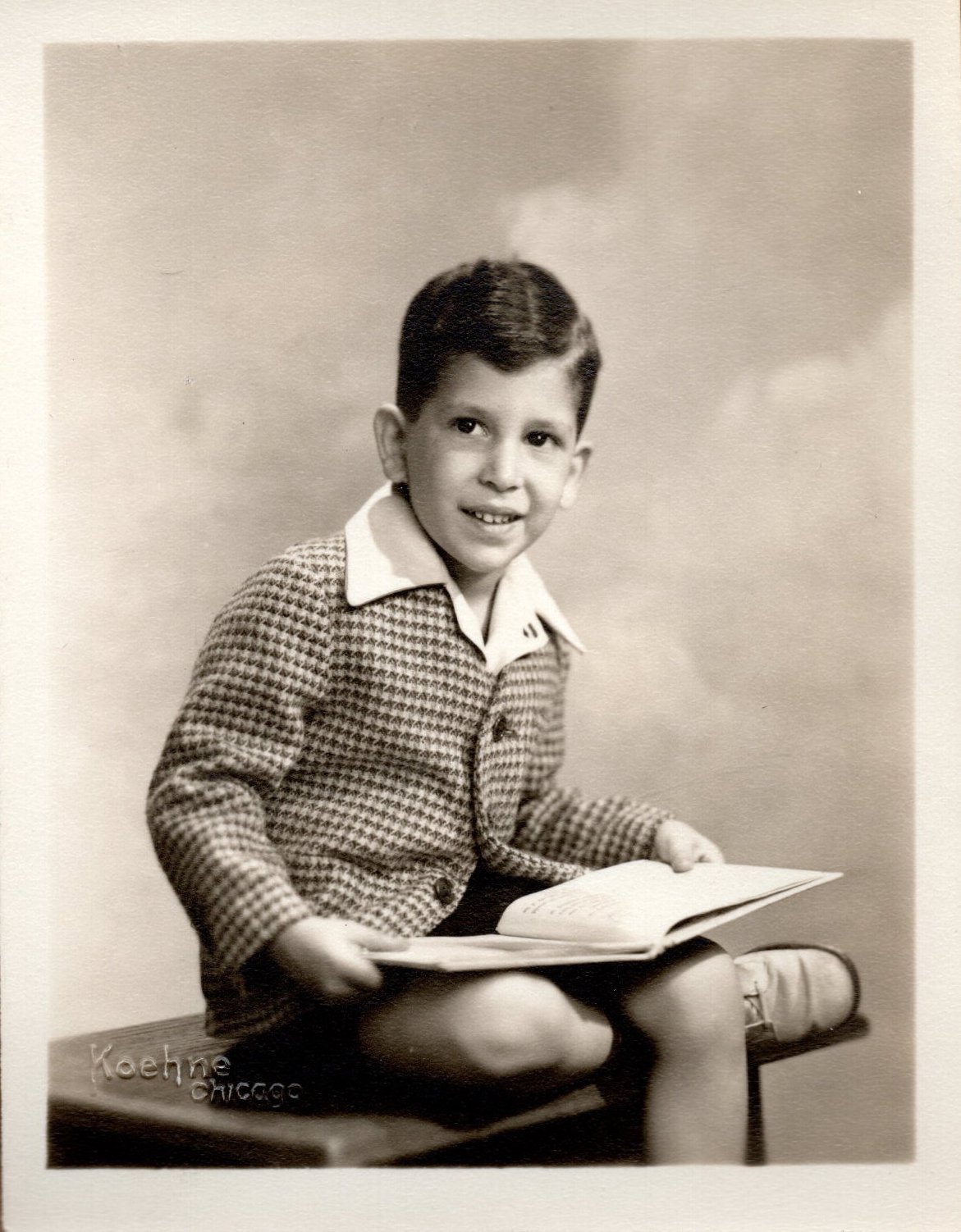Biography
Brozgol with his mask at the Brooklyn Museum’s Fence Art Show, 1976
Artist Lee Brozgol was a trailblazer of Lower East Side arts (b. 1941-2021).
During his life, Brozgol was a perpetual outsider, a white-Sephardic Jewish man from a family of immigrants.
Brozgol grew up in a world not ready for him. As a young iconoclast, the Midwest of 1950’s America suffocated him.
Moving to New York City in 1962, escaping an unhappy home life back in Chicago, was a blossoming for Brozgol both artistically and personally.
He took classes at Cooper Union and The Art Students League, while working and painting on Crosby Street in Soho.
Brozgol relocated to Eldridge Street in the heart of New York’s Lower East Side in the early 1980’s. He created work there for the next three decades, among a vibrant downtown arts community, including contemporaries such as Martin Wong and David Wojnarowicz.
Brozgol’s pencil drawings of the Lower East Side in the early 1980s, as well as his deep involvement with local activist causes and communities, made him a neighborhood figure who represented the Lower East Side he loved in beautiful and devastatingly dark detail.
Brozgol’s mural in the J/M/Z/F Delancey and Essex Street Subway station debuted in 1991. Titled “The House I Live In,” this public work celebrated the diverse Hispanic, Black, Jewish and Asian communities that made his neighborhood a vibrant and thriving place.
Today, these colorfully painted panels are on permanent display in the lobby of University Settlement on Eldridge Street, the block from where Brozgol lived and worked.
Brozgol’s iconic mosaic Greenwich Village Murals in the Christopher Street/Sheridan Square subway station, went up in 1994, and have inspired New Yorkers for over 25 years.
Made with kids from local public school PS 41, they depict often historically erased events, that shaped Greenwich Village, including the Stonewall uprising, and Washington Square Park’s troubled past as a burial ground and “Potter’s field” for Indigenous peoples, enslaved African Americans, victims of “yellow fever” and peoples historically vulnerable to social exclusion and chronic poverty.
Brozgol’s public works also include a proposed memorial to the victims of the Shirtwaist Triangle Factory Fire, created in 1995 and exhibited posthumously at HOME Gallery in 2022, and “Liberty: Our Story!” a mosaic tile project celebrating the immigrant experience, on permanent display in the lobby of Liberty High School in Manhattan. Brozgol worked on this with artistic mentees Juan Carlos and Roberto Martinez.
During his long creative life, Brozgol worked in a variety of mediums and found expression in a wide-range of artistic projects including drawing, painting, ceramic, photography, and writing.
His most enduring project, which Brozgol passionately devoted the last thirty years of his life to completeing, is called Hidden America. This is Brozgol’s creative odyssey through the back pages of America’s most explicit erotic personal columns, starting in the early 1980’s.
Brozgol subsequent drawings and profound snail mail correspondences with a vast range of LGBTQIA+, Hetero-spectrum, and other identifying peoples, present a correspondence-based series of works on paper. In its entirety, Hidden America forms a shockingly intimate, composite portrait of desire in late Twentieth Century America.
The first drawing, Hidden America: Florida was done in 1985. The series concludes in 2017 with Hidden America: South Carolina. Each work on paper was based solely on correspondence with a personal column advertiser — each from a different State.
In addition to his art practice, Brozgol was a social worker. He worked at FROST’D on Allen and Houston, immersing himself in helping those in his community who were HIV positive and struggling with addiction.
Brozgol dedicated decades of his life to working in LGBTQIA+ communities, both as a social worker, an artist, and champion of queer causes.
Much of his art deals with his inner turmoil over his own queerness, sexuality, identity, being othered, as well as the intimate lives of queer and hetero-identifiying peoples.
During his lifetime, Brozgol was a loving, passionate, and dedicated husband and father. In a closed-minded world, he struggled to openly share his full identity, except with his wife, children, and a few close friends.
His astute interest in people and the human psyche was a key element in both of his professions. Brozgol analyzed himself, and the human condition through art that is raw and edgy.
Brozgol was an artist, activist, and visionary who saw the beauty in imperfection.
Brozgol’s life and art is a testament to the vast range of human experience and identity. Sometimes painful, sometimes joyous, ultimately a celebration, a visual kaleidoscope of humanity, love, and a mirror for us all.
Legendary Lower East Side artist Lee Brozgol passed away on October 3, 2021.

